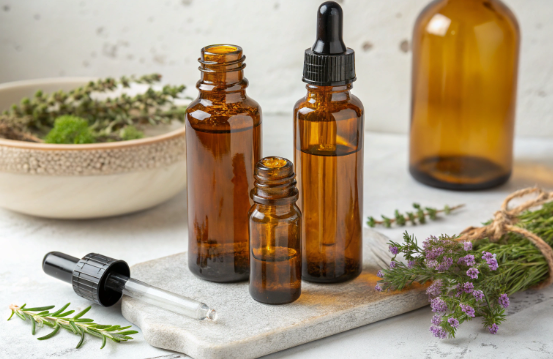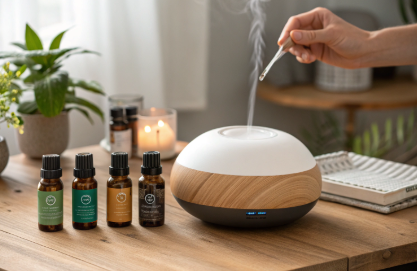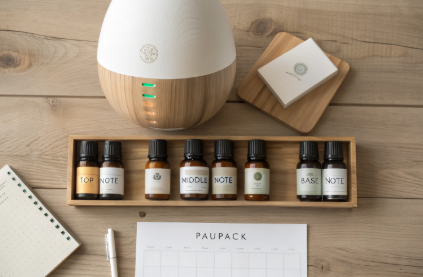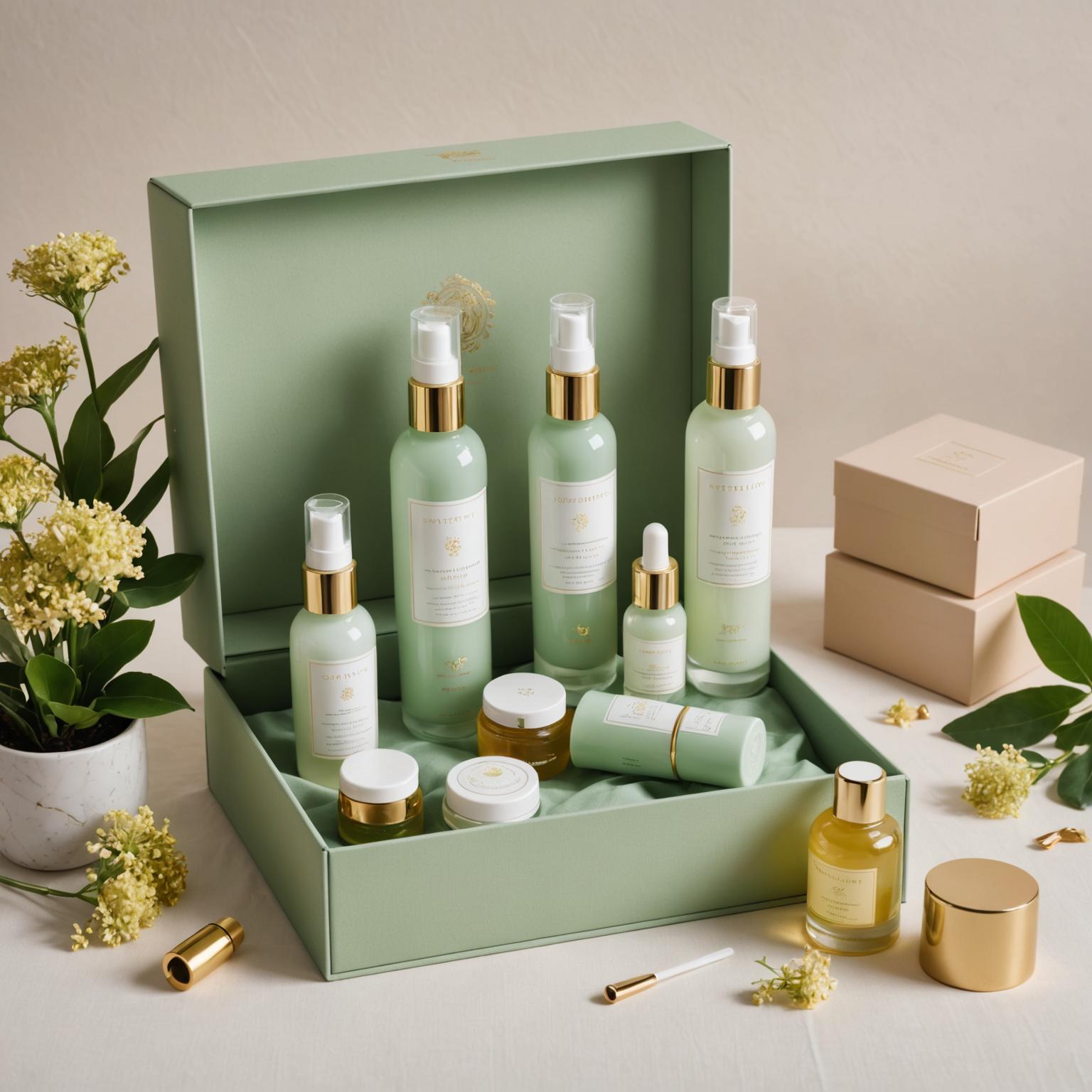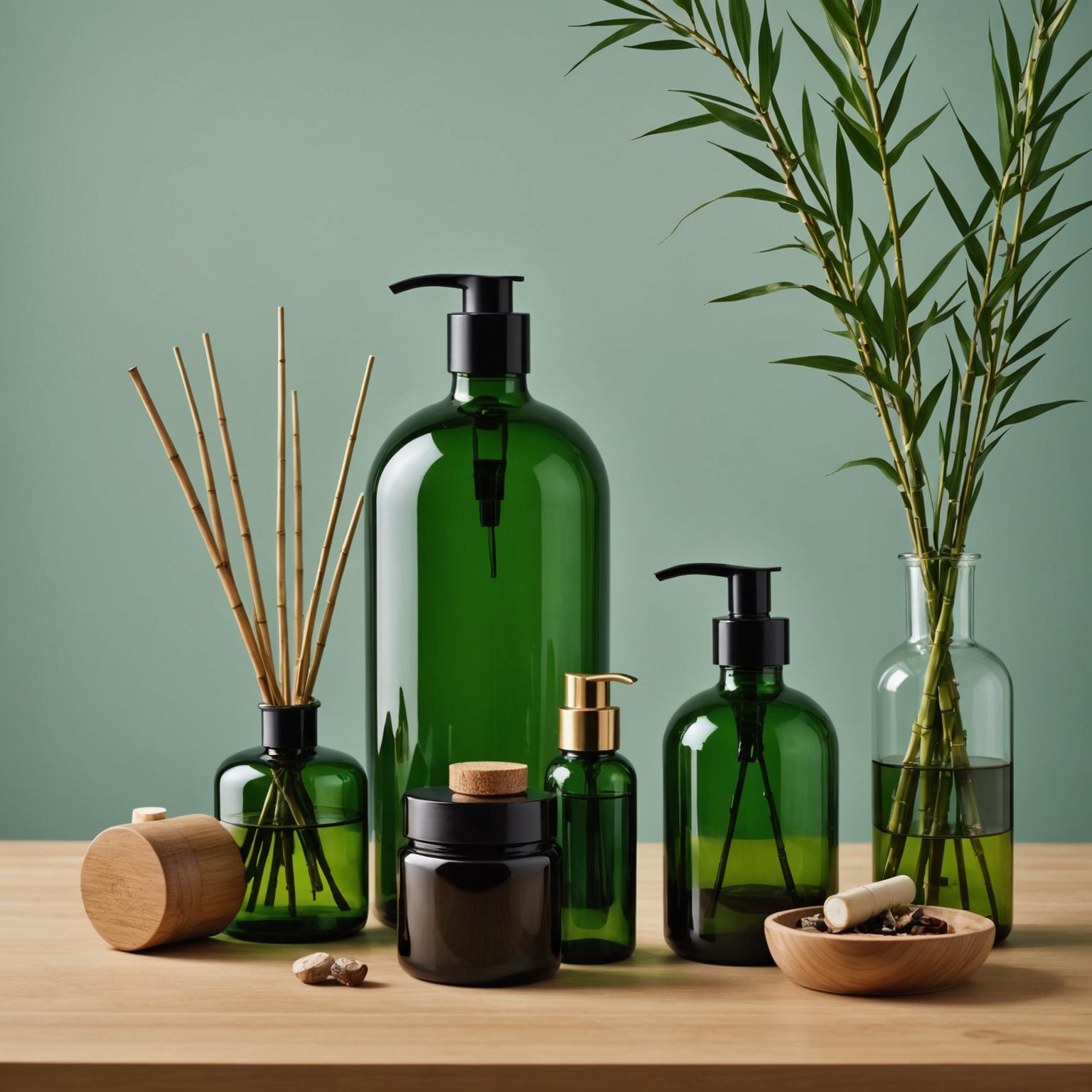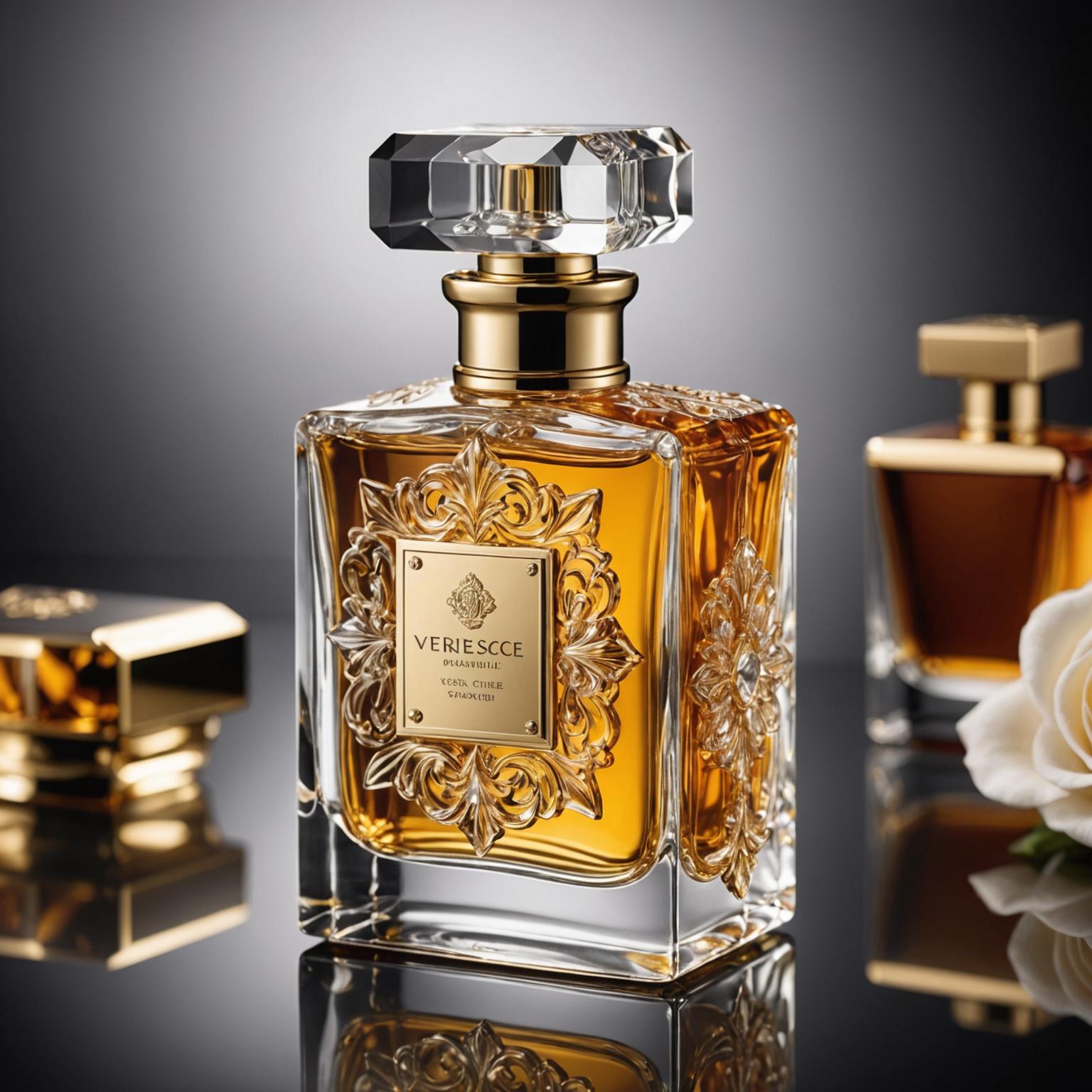Ever mixed too many oils in a diffuser and ended up with a confusing cloud of scent? You’re not alone. Blending essential oils can enhance your space—or overpower it.
You can safely mix 5 essential oils together in a diffuser, provided you balance their aroma intensities and stay within the recommended total drop count.
Best Practices for 5-Oil Blends
- Keep itunder 10 total dropsfor 100–200ml diffusers
- Use onlyone strong top note(like mint or citrus)
- Blend oils with complementary profiles (e.g., florals + woods)
Don’t forget thatcertain types of essential oils are much stronger than others—peppermint, eucalyptus, and lemongrass, for example, can easily overpower a blend. You may need to use only a single drop of these potent oils, while milder choices like lavender or cedarwood can be used more generously. Adjust individual drop counts so each oil contributes without dominating, ensuring a harmonious result that won’t overwhelm your senses.
What Are the Benefits of Using Essential Oils in a Diffuser?
Imagine stepping into a room and instantly feeling at ease, your senses greeted by a subtle hint of lavender, citrus, or sandalwood. That's the magic a quality essential oil diffuser brings into your space—no wizardry required, just a bit of aromatic science.
Essential oil diffusers disperse natural plant extracts into the air, transforming any room in your home or workplace with just a few drops. But the upsides go far beyond pleasant scents:
- Mood Lift and Stress Relief:Many studies show that certain aromas—think lavender or bergamot—can help reduce stress, anxiety, and even lift your spirits when the world feels a bit much.
- Improved Air Quality:While diffusers aren't air purifiers in the strictest sense, many essential oils (like eucalyptus and tea tree) are reputed for their antimicrobial properties, giving your environment a gentle refresh.
- Better Sleep:Pop some chamomile or cedarwood oil into your diffuser before bed and you might notice it’s a tad easier to drift off.
- Energy and Focus:Need a boost? Peppermint, rosemary, or citrus oils can gently invigorate your senses—perfect for powering through a workday or study session.
- Natural Home Fragrance:Say goodbye to chemical-laden sprays. Diffusers let you customize your own signature home scent, giving every space a clean, welcoming vibe.
- Support for Physical Wellness:From opening up airways to supporting immune function, many oils used in diffusion are staples in wellness rituals worldwide.
In short, essential oil diffusers offer an easy, elegant way to make your space feel fresher, more relaxing, and—dare we say—a little more like your favorite spa retreat.
Why Essential Oil Quality Matters
When it comes to diffusing essential oils, quality counts for more than just scent. High-quality oils, sourced from reputable brands likedōTERRA,Plant Therapy, orAura Cacia, are less likely to contain synthetic additives or impurities that can irritate your lungs or trigger allergies—especially important if you have kids or pets roaming the halls.
Opting for pure, natural oils ensures you get the therapeutic perks without the unwanted side effects. Inferior oils, on the other hand, can introduce harsh chemicals or fillers that undermine both your wellbeing and the atmosphere you’re trying to create. Bottom line? Your diffuser is only as good as what you put in it. Stick to pure, naturally derived essential oils for a safer, more aromatic experience.
Can you put too much essential oils in a diffuser?
Yes—and it’s a common mistake. Using too much oil doesn’t just smell strong; it can cause headaches, nausea, or even respiratory irritation in sensitive individuals.
Too much essential oil in a diffuser can overwhelm the senses, trigger allergies, and shorten your diffuser’s lifespan by clogging internal parts.
Adding extra drops might seem like a shortcut to a stronger effect, but essential oils are potent and should be used with care. Overloading your diffuser can saturate the air with odor molecules, overwhelming your body's nervous system and leading to symptoms like:
- Respiratory tract irritation
- Dizziness or giddiness
- Vomiting
- Eye irritation
- Migraines or headaches
- Queasiness
This is especially risky for people with allergies or heightened scent sensitivity. Plus, small spaces are more easily overpowered—what seems like a subtle blend in a living room can become a suffocating cloud in a bedroom or office.
Ventilation matters, too.Running your diffuser in a closed, poorly ventilated room amplifies the effects, increasing the risk of discomfort. Crack open a window or door to keep things balanced.
And remember: Continuous, non-stop diffusion isn’t better. Our noses adapt quickly, so you lose the therapeutic benefits while putting extra wear and tear on your diffuser. For best results—and happy noses—stick to intermittent bursts and recommended drop counts for your space size.
Should a Diffuser Run Continuously or Intermittently?
While it might seem tempting to let your essential oil diffuser run all day for a constant pleasant scent, that's not necessarily the safest—or most effective—approach. Our noses (and brains) adapt quickly to fragrances, so constant diffusion can actually mute the scent for you over time, making you less likely to notice any benefits.
Intermittent diffusion is generally recommended for both safety and efficiency.Running your diffuser in cycles, such as 30 minutes on and then 30 minutes off, prevents overwhelming your senses and reduces the risk of adverse reactions like headaches or respiratory discomfort. This cycling method also helps keep your diffuser in good shape by minimizing buildup and wear on the internal parts.
If you're concerned about air quality, regularly ventilating the room by opening a window can help maintain a fresh environment. In short, give your diffuser and your senses occasional breaks—you’ll enjoy more of the aroma’s therapeutic benefits without risking overload.
Risks of Using a Diffuser in a Poorly Ventilated Room
Diffusing essential oils in a space without enough airflow isn't just a rookie mistake—it can turn your calming oasis into sensory overload quicker than you think. Poor ventilation means your room can quickly fill with concentrated vapors, amplifying the strength of the scent to uncomfortable levels.
Here’s what can happen when your diffuser’s stuck in a stuffy room:
- You’re more likely to experience headaches, dizziness, or even mild nausea, especially if you have sensitivities or allergies.
- The air can feel heavy, and the intensity of the oils might irritate eyes, nose, or throat.
- Most importantly, a closed space gives essential oils nowhere to go, making the effects far stronger than intended.
To keep things pleasantly fragrant—without overpowering your senses or risking discomfort—always let some fresh air circulate by cracking a window or leaving a door ajar. Ventilation helps distribute the fragrance evenly and keeps the atmosphere gentle, not overwhelming.
Diffuser Drop Guidelines by Size
What is the recommended diffusion cycle for essential oils?
When it comes to diffusing essential oils safely, timing matters just as much as quantity. The sweet spot? Diffuse for about 30 minutes, then take a 30-minute break. This pattern helps maintain a pleasant fragrance in the room without overwhelming your senses or creating scent fatigue.
Don’t forget to crack a window or allow for airflow in your space. Regular ventilation ensures the air stays fresh and prevents the aroma from becoming too concentrated—even if you’ve mastered your drop count.
What happens if I use too little essential oil in a diffuser?
Using too little essential oil isn’t dangerous, but it usually means you’ll barely notice any scent in the air. A diffuser with just a drop or two might leave your room smelling fresh for a few minutes, then fade away—like lighting a single match and expecting it to fill the house with warmth.
If you’re new to diffusing (or experimenting with a new oil), it’s smart to start small. Gradually increasing the drops gives you a sense of how strong each oil is and lets your nose adjust.
In short: too little oil won’t harm anything, but you’ll miss out on that pleasant, lasting aroma you’re aiming for. It’s all about finding the sweet spot—enough to enjoy, not so much that it overwhelms.
| Diffuser Size | Max Drops | Room Size |
|---|---|---|
| 100ml | 3–5 drops | Small spaces (bedroom) |
| 200ml | 5–8 drops | Medium spaces (office) |
| 300ml+ | 8–12 drops | Large rooms (living room) |
What are the risks of constant, non-stop diffusion of essential oils?
It might seem tempting to run your diffuser around the clock, but going overboard comes with real downsides—for both your health and your diffuser’s lifespan.
Continuous diffusion can overwhelm your senses, irritate your respiratory system, and cause symptoms like headaches, dizziness, or even nausea.Those sensitive to scents (including children, pets, or anyone with allergies) are especially at risk when exposed for long stretches without breaks.
On top of that, running your diffuser non-stop can clog its internal parts. This shortens its life—think of it like leaving your coffee maker on all day. Plus, your nose adapts quickly; after a while, you won’t even notice the aroma, but your system will still be processing all those scent molecules.
For safer, more effective results:
- Stick to short diffusion sessions—30 minutes on, then 30 minutes off works well.
- Always make sure your space is ventilated; crack a window or leave a door slightly open.
- Start slow with new oils to see how your body reacts.
Taking breaks lets your senses reset and helps you get the benefits of essential oils without unintended side effects.
What happens if you use too little essential oil in your diffuser?
It might seem counterintuitive, but using too little essential oil can be just as underwhelming as using too much is overwhelming. If you go too light on the drops, you’ll notice the aroma is faint—or may not notice much scent at all.
So, what’s the impact?
- The fragrance may not effectively fill the room, leaving you wondering if your diffuser is even on.
- You might not experience the potential mood-boosting or therapeutic benefits of your chosen oils, since the scent isn’t concentrated enough.
- In large rooms, a low dose simply gets lost in the air.
If you’re new to diffusing, it’s smart to start on the lighter side and increase by a drop or two as needed. This helps you find your personal sweet spot without overwhelming the senses—even as you experiment with new oils or blends.
Why Proper Ventilation Matters When Using Essential Oils
It’s tempting to close yourself off in a cozy, aromatic oasis—but here’s the catch: diffusing essential oils in a poorly ventilated space can quickly backfire. When air can’t circulate, those wonderful scents don’t have anywhere to go, and they build up fast.
This over-concentration isn’t just overpowering to your nose. It can actually cause headaches, trigger allergies, or make the air feel heavy—especially if you’re sensitive. Imagine walking into a perfume shop that forgot to open the doors; that’s the effect you’re trying to avoid.
Pro Tip:Always leave a door or window cracked when you’re diffusing. Good airflow helps the scent disperse more evenly and keeps your space comfortable, not cloying.
For small or unventilated rooms, consider using even fewer drops than usual. It’s all about creating a pleasant ambiance—not a scent tsunami.
Why is proper room ventilation important when using a diffuser?
Proper ventilation is often overlooked, but it makes all the difference when diffusing essential oils. Think of it as the buffer zone that keeps your scent journey from turning into sensory overload.
When you use a diffuser in a space with good airflow—like an open window or door—the aroma circulates gently, creating a pleasant environment without becoming overwhelming. In contrast, diffusing in a sealed or stuffy room can turn even the most delightful blend into an overpowering cloud, making the air feel heavy and potentially irritating sensitive noses or respiratory systems.
Good ventilation also helps prevent essential oil particles from building up, which not only protects your comfort but can extend your diffuser’s working life. Aim for spaces where air can circulate freely. If you’re working with a cozy nook or an area that lacks airflow, dial back the number of drops or run the diffuser for shorter intervals.
A quick word to the wise: those who are pregnant, have small children, or live with pets should take extra care with both oil choice and ventilation. A little fresh air goes a long way toward keeping everyone comfortable and safe—so don’t forget to crack that window or prop open a door when setting the mood.
Does Room Size and Ventilation Affect How Much Oil You Should Use?
Absolutely—where you place your diffuser makes a big difference in how much oil you actually need.
- Smaller rooms:Less is more. In a compact bedroom or office, stick to the lower end of the diffuser’s drop range. Too much oil can easily overwhelm a tiny space.
- Larger spaces:You can bump up the number of drops slightly, but still stay within your device’s guidelines.
Ventilation also plays a role. A well-ventilated room (think: an open window or slightly ajar door) helps disperse scent gently and evenly. If your space is closed off with poor airflow, even a modest amount of essential oil can become overpowering—not to mention, it can affect people with sensitivities more strongly.
Tip:For best results, always use your diffuser in rooms with some airflow. If your space feels stuffy or you catch yourself wrinkling your nose, crack a window for a bit. This keeps the scent balanced and enjoyable, rather than cloying or overwhelming.
Can you put multiple essential oils in a diffuser?
Absolutely—and in fact, it’s encouraged. Blending adds complexity, function, and signature scent creation. But there’s a science to it.
Yes, you can blend multiple essential oils in a diffuser—typically 3 to 5 oils is ideal for a well-balanced aroma.
Here’s how to approach it:
How to Layer Multiple Oils Effectively
-
Choosea theme(e.g., calming, energizing, immune support)
-
Use the30-50-20 rule: 30% top notes, 50% middle, 20% base
-
Limit to8–10 total dropsfor a 200ml diffuser
Example blend:
-
Top Note (2 drops): Lemon
-
Middle Note (3 drops): Lavender
-
Base Note (1 drop): Frankincense
PauPack offerspre-blended essential oil kitsfor brands looking to simplify customer experience and avoid mismatched scents. These sets are especially popular in holiday gift collections or starter kits.
What is the 30 50 20 rule for essential oils?
This rule is your roadmap for creating diffuser blends that actually smell good—rather than a jumble of scents.
The 30-50-20 rule suggests structuring a blend with 30% top notes (quick scent), 50% middle notes (core aroma), and 20% base notes (lasting depth).
Example: Energizing Diffuser Blend
How can I use essential oils to improve sleep?
Looking to wind down at night? Essential oils can help transform your bedroom into a restful retreat if used effectively. The trick is timing and exposure.
Diffuse your chosen sleep-promoting oils about 30 minutes before bed.For best results, set up your diffuser and let it run while you’re out of the room—this gives the scent time to fill your space without overwhelming your senses as you settle in. By the time you’re ready to sleep, the air is subtly infused and you reap the calming benefits without the risk of overexposure.
Some popular oils for relaxation and sleep include:
- Lavender:The classic choice for calming nerves and encouraging deep sleep.
- Chamomile:Soft and soothing, ideal for unwinding after a long day.
- Bergamot:Offers a gentle citrus lift while still calming the mind.
- Cedarwood:Earthy and grounding, perfect for those who prefer woodsy scents.
Remember: Less is more. Stick to recommended drop counts for your diffuser size to avoid overpowering your room or risking headaches. This simple routine not only helps you sleep better, but also turns your bedtime ritual into a spa-like experience.
| Note | Oil | Drops (out of 10) |
|---|---|---|
| Top | Peppermint | 3 |
| Middle | Rosemary | 5 |
| Base | Cedarwood | 2 |
This ratio ensures the blend smells good from first whiff to final evaporation.
PauPack encourages our clients toembed this ratio into product education, whether through printed guides or QR codes on packaging. It positions your brand as both thoughtful and professional.
Can I mix 5 essential oils together?
Yes, but only if they play well together. Think of it like a cocktail—just because youcanmix five ingredients doesn’t mean youshould.
You can safely mix 5 essential oils together in a diffuser, provided you balance their aroma intensities and stay within the recommended total drop count.
Best Practices for 5-Oil Blends
-
Keep itunder 10 total dropsfor 100–200ml diffusers
-
Use onlyone strong top note(like mint or citrus)
-
Blend oils with complementary profiles (e.g., florals + woods)
Recommended blend:
-
Lavender (2 drops)
-
Orange (2 drops)
-
Eucalyptus (1 drop)
-
Cedarwood (2 drops)
-
Ylang Ylang (1 drop)
This adds dimension without sensory overload.
At PauPack, we supply essential oil brands withcustomized blend bottles—pre-mixed oils labeled by mood or function. It’s a great way to simplify customer choice and build trust through consistency.
Why Quality Matters: The Benefits of Pure Essential Oils
When it comes to diffuser blending, quality is not the place to cut corners. Think of essential oils like coffee beans or fine chocolate—the better the source, the more rewarding (and safer) your experience.
Using high-quality, pure essential oils offers several clear benefits:
- Safer for Everyone:Premium oils from trusted sources likedoTERRA,Plant Therapy, orRocky Mountain Oilsare less likely to include additives or synthetic fillers that can trigger allergies or respiratory irritation—especially important if pets or kids are in the house.
- Better Scent Profiles:Pure oils produce cleaner, more authentic aromas that blend harmoniously. This makes your signature scent actually smell like what you intended, not a muddy mix of chemicals.
- Therapeutic Benefits:Only pure, natural oils deliver the botanical properties—like calming, uplifting, or immune-boosting effects—that customers seek.
- Peace of Mind:Knowing your oils are free from mystery ingredients means you can diffuse with confidence, whether you’re unwinding at night or setting the mood for holiday guests.
For the best blends, look for oils that are labeled as 100% pure essential oil, ideally with GC/MS testing available. That way, your diffuser experience stays as safe as it is enjoyable.
Conclusion
You can mix up to 5 essential oils in a diffuser—but it’s all about balance. Use no more than 8–12 total drops, follow scent layering rules, and stick to a theme for the best aromatic experience.




